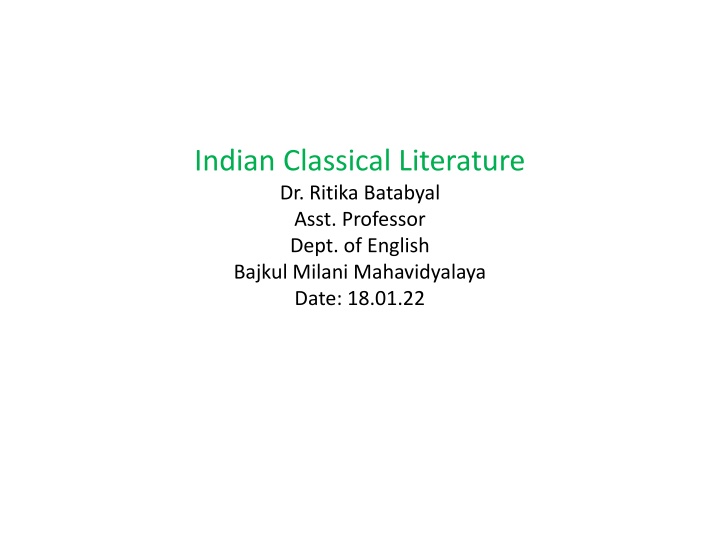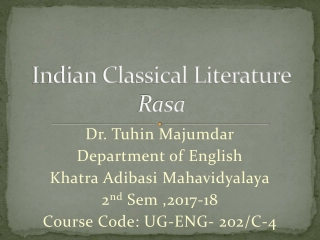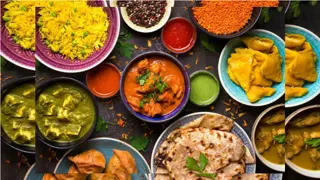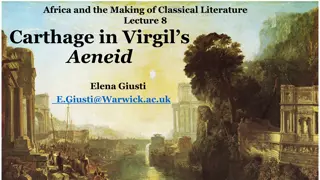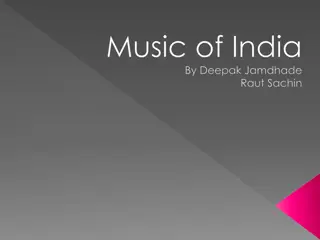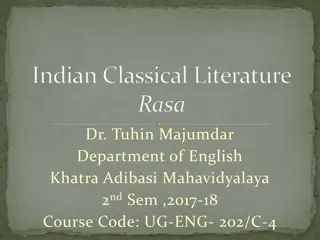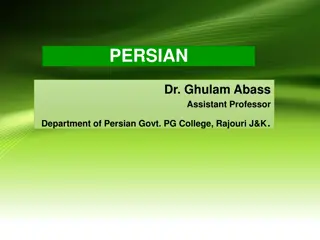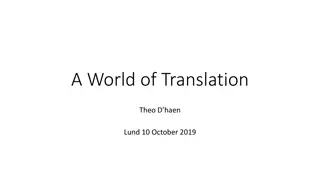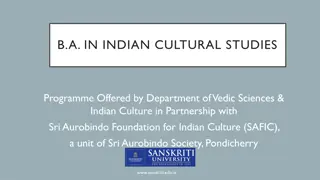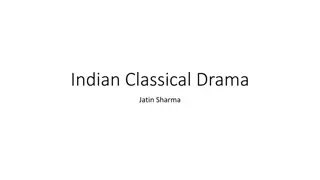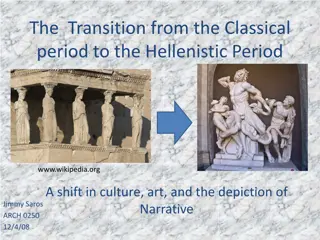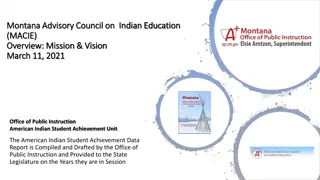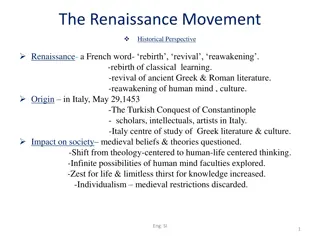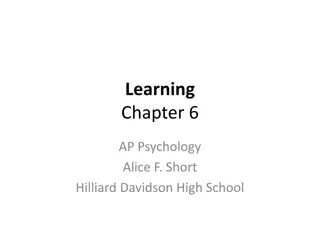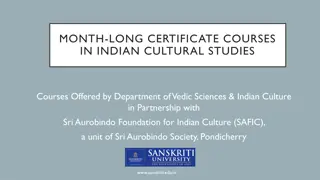Overview of Indian Classical Literature
Indian Classical Literature encompasses diverse works such as the Natyashastra, focusing on drama and the awakening of Rasa in audiences, and prakarana plays like Mrichchhakatika, showcasing political intrigue and societal landscapes.
Download Presentation

Please find below an Image/Link to download the presentation.
The content on the website is provided AS IS for your information and personal use only. It may not be sold, licensed, or shared on other websites without obtaining consent from the author.If you encounter any issues during the download, it is possible that the publisher has removed the file from their server.
You are allowed to download the files provided on this website for personal or commercial use, subject to the condition that they are used lawfully. All files are the property of their respective owners.
The content on the website is provided AS IS for your information and personal use only. It may not be sold, licensed, or shared on other websites without obtaining consent from the author.
E N D
Presentation Transcript
Indian Classical Literature Dr. Ritika Batabyal Asst. Professor Dept. of English Bajkul Milani Mahavidyalaya Date: 18.01.22
Natyashastra Treatise on Indian dramaturgy by Bharatmuni There are 37 chapters & 6000 slokas approx. Describes the genesis of drama, Brahma extracting the essence of all the 4 Vedas and created Natyaveda. Called the 5thVeda . There is nothing that is not found in Natya. It is an imitation of all the situations of the 3 worlds.
Purpose of Natya is the awakening of Rasa/sentiment in the minds of the audience. Medium is the actor s art of acting/abhinaya Acting connects to the bhavas and transports the individual in to a super sensual inner state of being. Purpose of Natya restore human potential, elevate human beings to a higher level of consciousness ( Ananda aspect)
Concept of Rasa According to Bharata rasa is predominant, there can be no sense of poetry without Rasa Vibhavas, Anubhavas and Vyabhicaribhavas are the basis of rasa. Bhavas consist of an emotional state of mind, reaches when permanent and not transitory, the state of rasa. Rasa is so called as its essence consists in its taste/relish. Sthayi-bhava/principal mood is the basis of Rasa. Sthayi bhava are certain more/less permanent mental states like love, anger, grief, fear. There are 8 stahyi bhavas and their corresponding 8 rasas.
Prakarana Play where the writer literally prakurute i.e., devises by means of his own imagination and genius an original plot with its here and works up its elaboration. It has an original/invented germ. Plot is not connected with any Rishi s works or itihasa. Varied exploits of Brahmins, merchants, ministers, priests, king s officers are presented Should not have an exalted hero, no divine characters are there. Connected with men outside the Royal court. Should have servants, parasites, heads of merchant s guilds, courtesans, thieves. Bija, Bindu, Pataka, Prakari, karya
Mrichchhakatika - Sudraka 10 act Prakarana 1st4 acts are an almost reproduction with slight variations of Bhasa a Charudatta . Bhasa probably wanted to portray a love story with Vasantasena and Charudatta Discussion of the Prologue use of language, main bija of the play is hinted at Differences between Mrichchhakatika and Charudatta Introduction of the character of Aryaka story of a political revolution and the overthrowing of the corrupt king Palaka Cosmopolitan nature of Mrichchhakatika. Characters are citizens of the world. The legal system and the court scene brings a contemporaneity in the play. Dramatic trope of mistakes swapping of carriages in the 6thact. Political plot of intrigue and the love affair Ornaments occupy an important role in each of the acts. Importance of the title Mrichchhakatika/ little clay cart - discussion Characters of Charudatta, Vasantasena, Samsthanaka - discussion Humour in the play discussion Social reality in the play.
